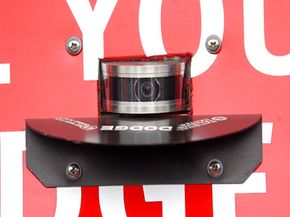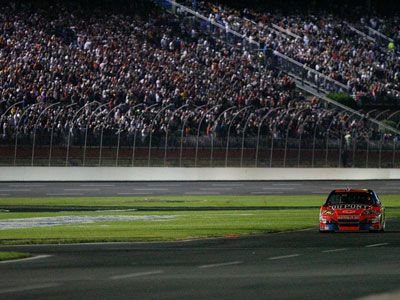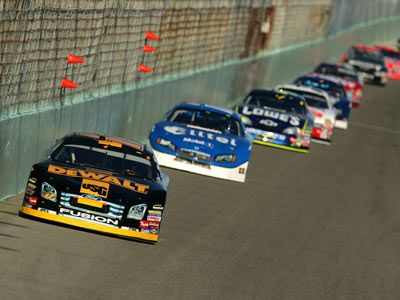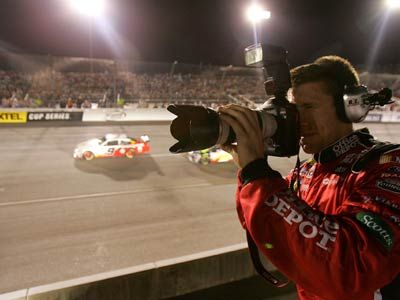Before the advent of the in-car camera, NASCAR drivers were shrouded in mystery during races. They were hidden behind helmets, the glare of the Southern sun and the cars' thickly padded roll cages. Their only communication with the outside world (or crew chief) came through two-way radios.
NASCAR coverage would change forever in 1983, when the first in-car camera made its debut during the Daytona 500. The RaceCam, as it was called, was a miniature, remote-controlled camera that sent a signal to a helicopter hovering over the track. The helicopter sent the signal to a trailer where the feed was processed and sent out to America's televisions.
Advertisement
That first camera was carried by NASCAR legend Cale Yarborough's car, who also became the first driver to win a race with an in-car camera. The camera caught also several other, not-so-appropriate moments: Veteran driver Dick Trickle was famously caught using his car's functional cigarette lighter to light up during a caution lap in the late 1980s. In the decades since, fans have become used to hearing the driver speak with his or her crew during the race and watching him shift through the gears as he or she enters and exits turns.
Technology kept pace as the sport grew in popularity in the early 1990s. In-car cameras were mounted in more cars and could be found in more places: the roof, the bumpers, the axles, and aimed along the side panels. In 2007, race coverage took another step into the future when ESPN debuted high-definition in-car cameras in the NASCAR Nextel Series.
After 25 years of practice, the race teams and camera tech teams have figured out the ideal setup for all these cameras. We'll explore that on the next page.
Advertisement



